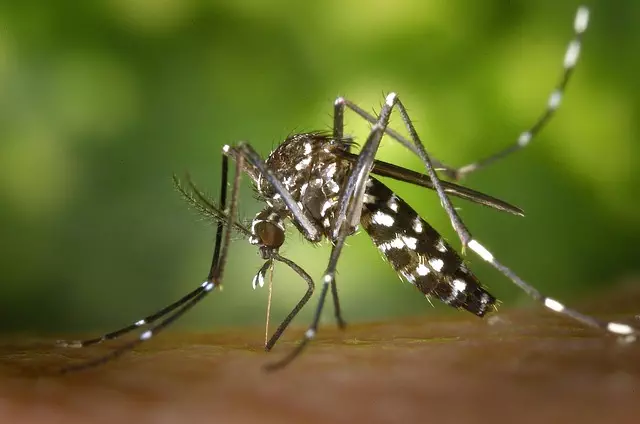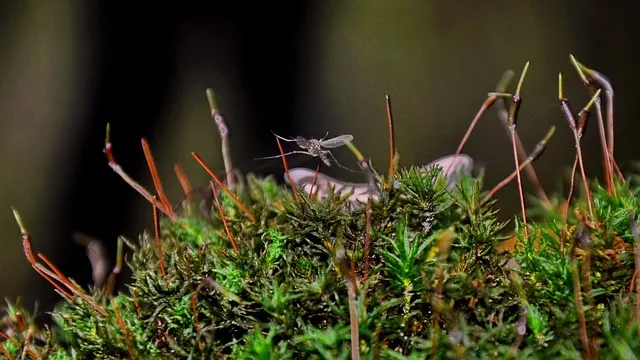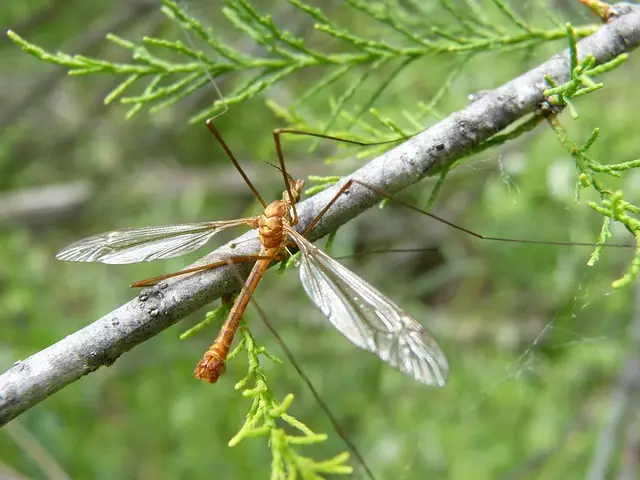Mosquitoes pose a significant global health concern due to their intricate life cycle and role in disease transmission. Traditional chemical pesticides have drawbacks, leading to a search for innovative solutions like advanced mosquito trapping systems that use light, CO2, and chemical lures. These traps offer an eco-friendly alternative, reducing mosquito populations and mitigating disease risks. With remarkable advancements, these systems are versatile, effective, and cost-effective, suitable for both residential and commercial settings. Future prospects include smart automated traps, genetic studies for targeted solutions, and environmental strategies to disrupt breeding grounds, promising a more sustainable approach to mosquito control.
Mosquitoes are more than just a nuisance; they pose significant health risks, transmitting diseases like malaria, dengue, and Zika. Traditional mosquito control methods, such as spraying pesticides, have limitations, often ineffective against the complex breeding patterns and behavioral adaptations of these insects. This article explores innovative solutions through Mosquito Trapping Systems—a game-changer in mosquito management. We’ll delve into their technology, benefits, different types, implementation, costs, and future trends, offering a comprehensive guide to effective mosquito control.
Understanding Mosquitoes: Behavior and Breeding Patterns

Mosquitoes, though small, pose a significant threat to public health worldwide. Understanding their behavior and breeding patterns is crucial in implementing effective mosquito control strategies. These insects exhibit a complex life cycle, which includes four distinct stages: egg, larva, pupa, and adult. Female mosquitoes require blood meals for reproduction, often laying eggs in standing water sources like ponds, buckets, or tires. Their preference for specific habitats varies; some species thrive in urban areas with artificial water collections, while others prefer natural bodies of water.
Knowledge of these patterns allows developers to design innovative mosquito trapping systems. These traps utilize various methods, such as light attraction, carbon dioxide emissions, and chemical lures, to entice and capture mosquitoes. By targeting their behavior, these control measures can significantly reduce mosquito populations, thereby minimizing the risk of disease transmission and improving overall public health.
Traditional Mosquito Control Methods: Pests and Limitations

Traditional methods of mosquito control often rely on chemical pesticides and insecticides, which can be effective but come with several drawbacks. These chemicals may have harmful effects on non-target organisms, including beneficial insects, birds, and aquatic life. Moreover, they can persist in the environment, leading to long-term ecological impacts and potential health risks for humans and animals.
Another limitation is their short-lived impact. Mosquitoes quickly develop resistance to chemical treatments, rendering them less effective over time. These methods also require constant application and monitoring, which can be costly and time-consuming. Additionally, they fail to address the root causes of mosquito breeding, such as standing water and habitat availability, leading to ongoing issues in affected areas.
The Rise of Mosquito Trapping Systems

The need for effective mosquito control has sparked a global shift towards innovative solutions, with mosquito trapping systems emerging as a prominent answer. Traditional methods of pest control often involve chemical treatments, which can have adverse environmental and health effects. In response to this, scientists and researchers have developed advanced mosquito trapping technologies designed to offer a safer, more sustainable approach to mosquito management.
These modern systems utilise a combination of light, heat, and carbon dioxide to attract mosquitoes, drawing them into traps where they become entangled or are eliminated. This method not only reduces the reliance on chemical pesticides but also provides a more targeted and efficient form of mosquito control. As urban areas expand and face increasing challenges with mosquito-borne diseases, these trapping systems offer a promising solution for creating healthier, more livable environments.
How Mosquito Trapping Works: Technology and Design

Mosquito trapping systems have evolved significantly in recent years, offering advanced solutions for mosquito control. These innovative devices utilize a combination of technology and design to attract, trap, and eliminate mosquitoes effectively. The core principle behind their functionality lies in mimicking human presence and creating an environment that mosquitoes find irresistible but from which they cannot escape.
Most mosquito traps employ carbon dioxide (CO2) as the primary lure, as mosquitoes are naturally drawn to this gas, which is a byproduct of human respiration. Additionally, they incorporate other attractants like heat and light to further enhance their effectiveness. Once attracted, mosquitoes enter the trap and become entangled in fine mesh nets or are collected in traps below, ensuring their capture and subsequent destruction. This technology not only reduces mosquito populations but also provides a safer, more environmentally friendly alternative to traditional chemical sprays for mosquito control.
Benefits of Using Mosquito Trapping Systems

Mosquito trapping systems offer a highly effective and environmentally friendly approach to mosquito control, providing numerous benefits for both residential and commercial areas. One of the key advantages is their ability to significantly reduce mosquito populations in targeted zones. These traps use various methods, such as CO2 emissions, light attraction, or specific pheromones, to lure and capture mosquitoes, breaking their breeding cycle. By targeting these pests directly, trapping systems can prevent them from multiplying and spreading diseases.
Additionally, they contribute to a more comfortable living environment by minimizing the hassle and discomfort caused by mosquito bites. This is especially beneficial during outdoor gatherings or recreational activities, ensuring folks can enjoy their time without constantly worrying about insect nuisances. With their efficient mosquito control capabilities, these systems promote public health and overall well-being, making them a smart investment for areas prone to mosquito-borne disease transmission.
Types of Mosquito Traps: Chemical vs. Non-Chemical

When it comes to mosquito control, choosing the right trapping system is essential. One key distinction lies in the approach: chemical vs. non-chemical methods. Chemical traps often rely on carbon dioxide (CO2) or synthetic versions of human sweat to attract mosquitoes, combined with insecticides to kill them upon capture. While effective, these systems raise concerns about environmental impact and potential health risks associated with chemical exposure.
Non-chemical alternatives, on the other hand, focus on mimicking natural mosquito attractants like heat and moisture without using harmful substances. These traps typically employ ultraviolet (UV) lights or fan-driven systems to draw mosquitoes in, then use physical barriers or insects that are not harmful to humans and pets to dispatch them. This approach offers a safer, more eco-friendly method for mosquito control, making it an appealing choice for residential and commercial areas alike.
Implementing Mosquito Trapping Systems in Different Environments

Implementing mosquito trapping systems is a versatile approach to mosquito control, adaptable to various environments. Urban areas with dense populations often face unique challenges due to the abundance of standing water in gutters, containers, and parks. Here, advanced trap models that attract mosquitoes with CO2 or heat can be highly effective, as they target adult mosquitoes actively seeking hosts. These traps are discreetly placed on rooftops or in strategic locations throughout public spaces, ensuring minimal disruption to daily life while significantly reducing mosquito populations.
In contrast, rural settings present different dynamics, often featuring large bodies of water and more open landscapes. For such areas, a combination of trapping and source reduction is ideal. Traps can be positioned near wetlands or ponds to capture mosquitoes at the source, while removing standing water from agricultural fields and drainage systems further complements these efforts. This multi-pronged approach leverages the versatility of mosquito trapping systems to achieve robust mosquito control across diverse environments.
Maintenance and Cost Considerations for Effective Mosquito Control

Effective mosquito trapping systems require regular maintenance to ensure optimal performance. This includes routine cleaning and replacement of components such as filters, fans, and light bulbs. Additionally, monitoring trap catches and adjusting settings accordingly is crucial for maintaining effectiveness. Proper maintenance not only extends the lifespan of the system but also ensures it remains environmentally friendly by preventing waste.
When considering the cost of mosquito control, it’s essential to balance upfront investment with long-term savings. While initial setup costs can be significant, ongoing expenses like electricity and maintenance are typically lower compared to traditional pest control methods. Moreover, the reduced need for chemical applications and potential public health benefits make these systems a cost-effective solution for both homeowners and communities looking to implement robust mosquito control strategies.
Future Trends in Mosquito Management: Innovations and Research

The future of mosquito management is promising, with innovations and research driving significant advancements in mosquito control. Scientists are exploring new methods to combat these pests, focusing on both prevention and elimination. One emerging trend is the development of smart, automated mosquito trapping systems that use advanced sensors and AI to detect and capture mosquitoes more efficiently. These systems can be strategically placed in areas prone to high mosquito activity, helping to reduce their population significantly.
Genetic research also plays a crucial role, with scientists mapping mosquito DNA to understand their behavior and life cycles better. This knowledge enables the creation of targeted repellents and traps that specifically attract and eliminate problem species. Additionally, environmental strategies are gaining traction, focusing on habitat manipulation and water management to disrupt mosquito breeding grounds. These trends indicate a more precise, sustainable, and holistic approach to mosquito control in the years to come.
